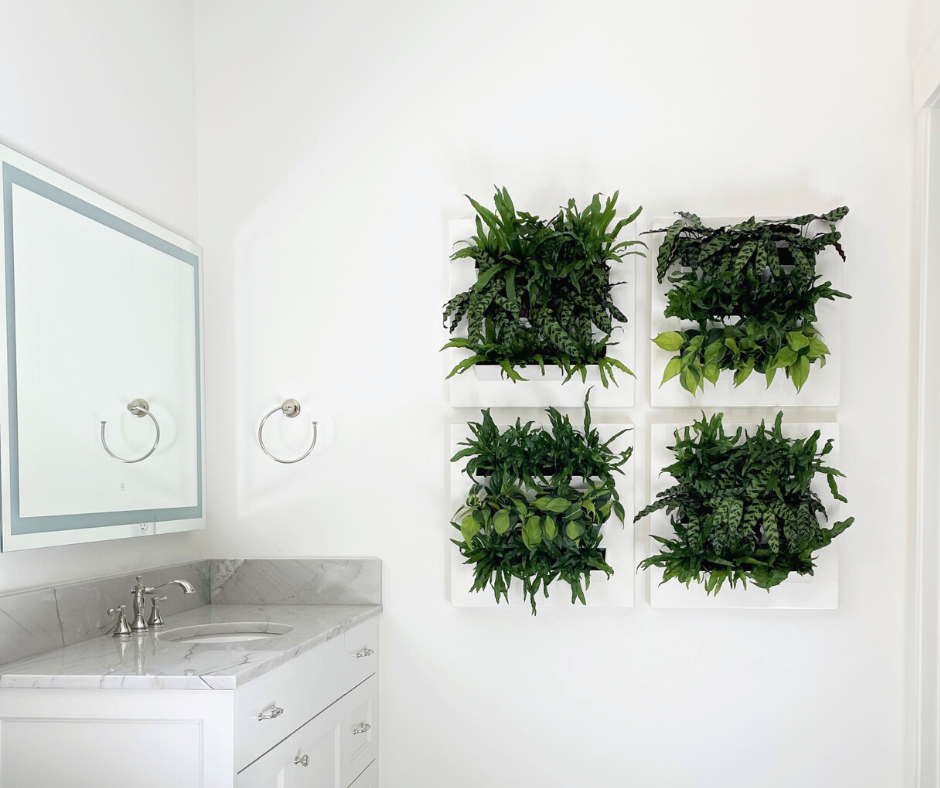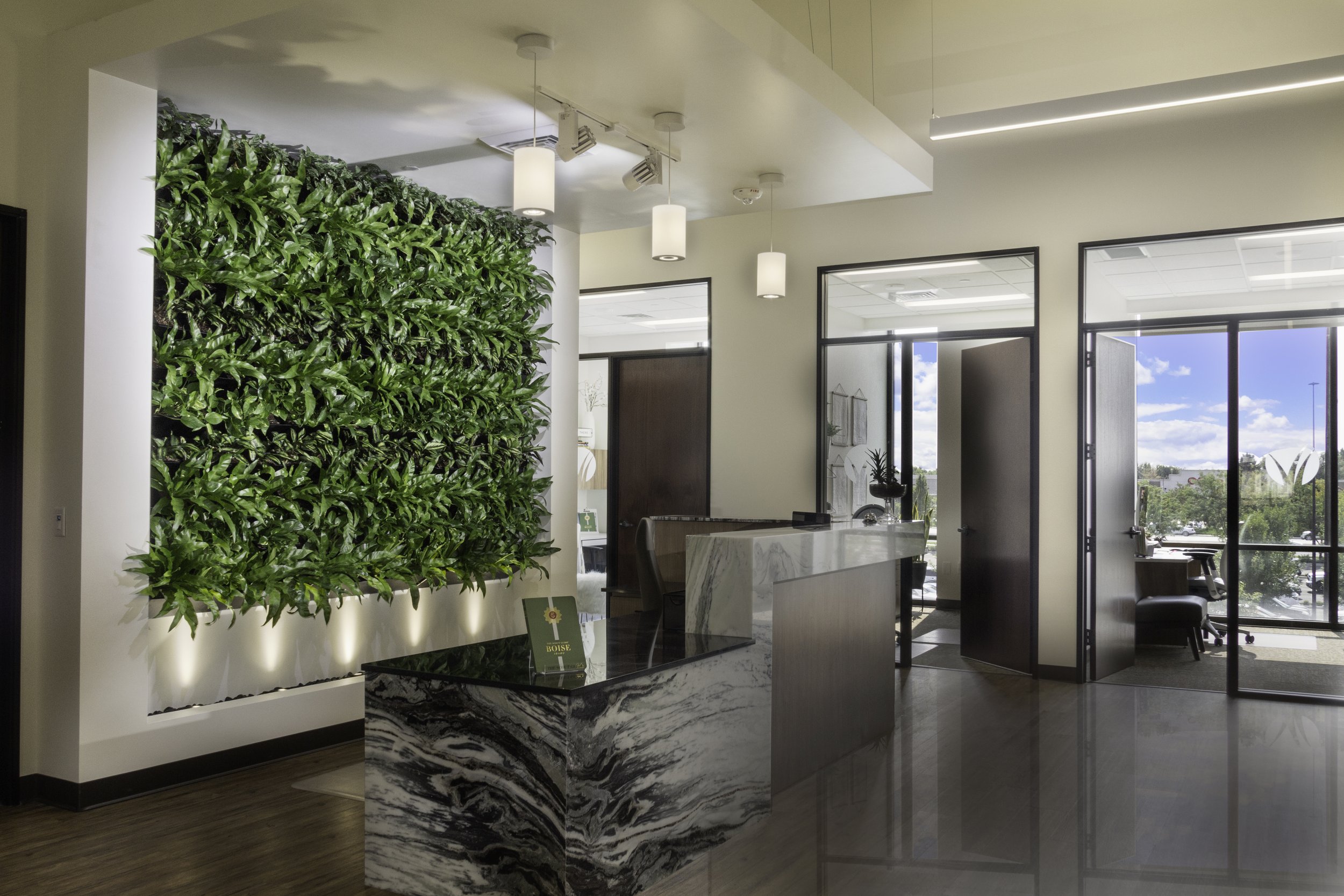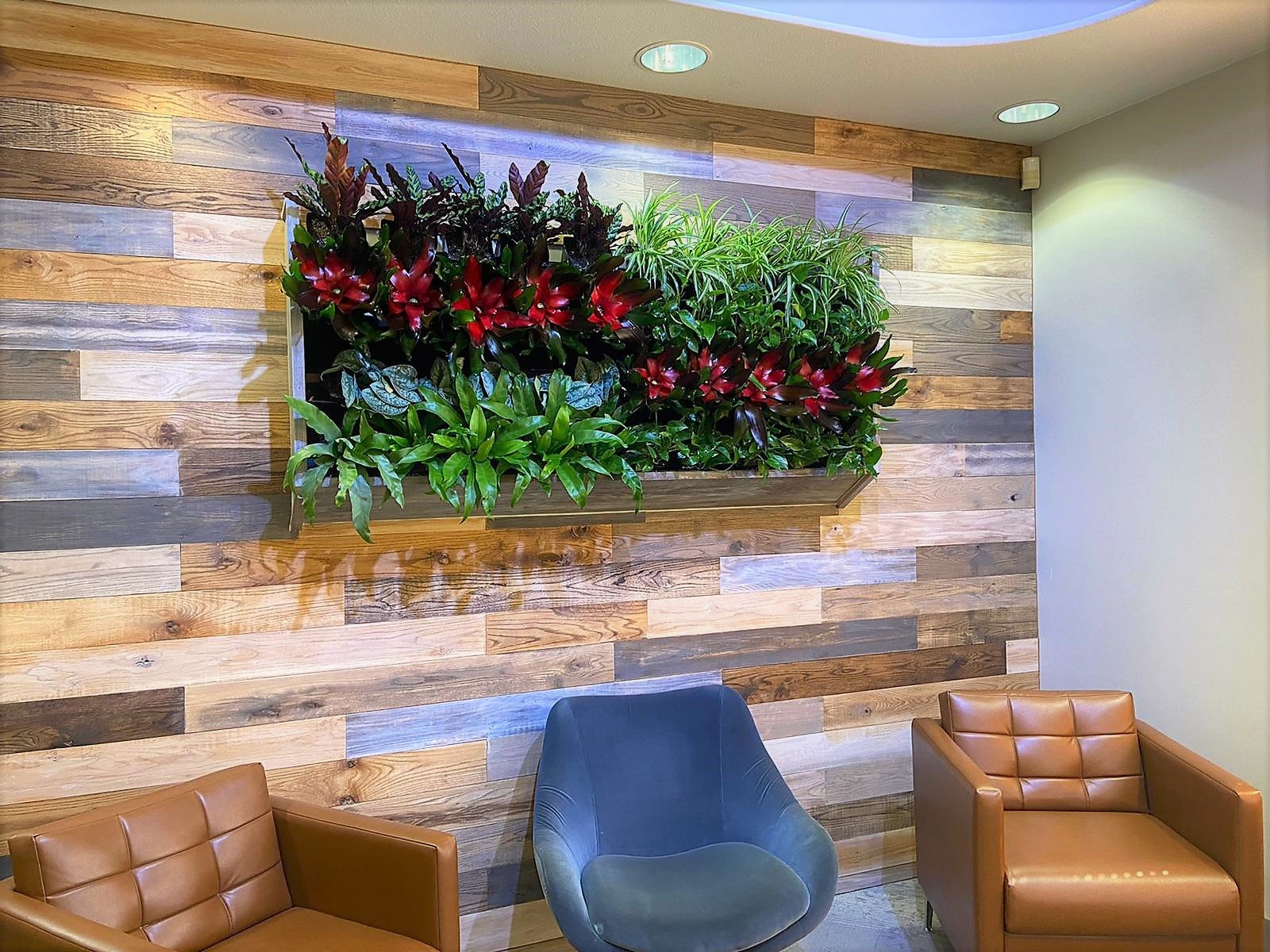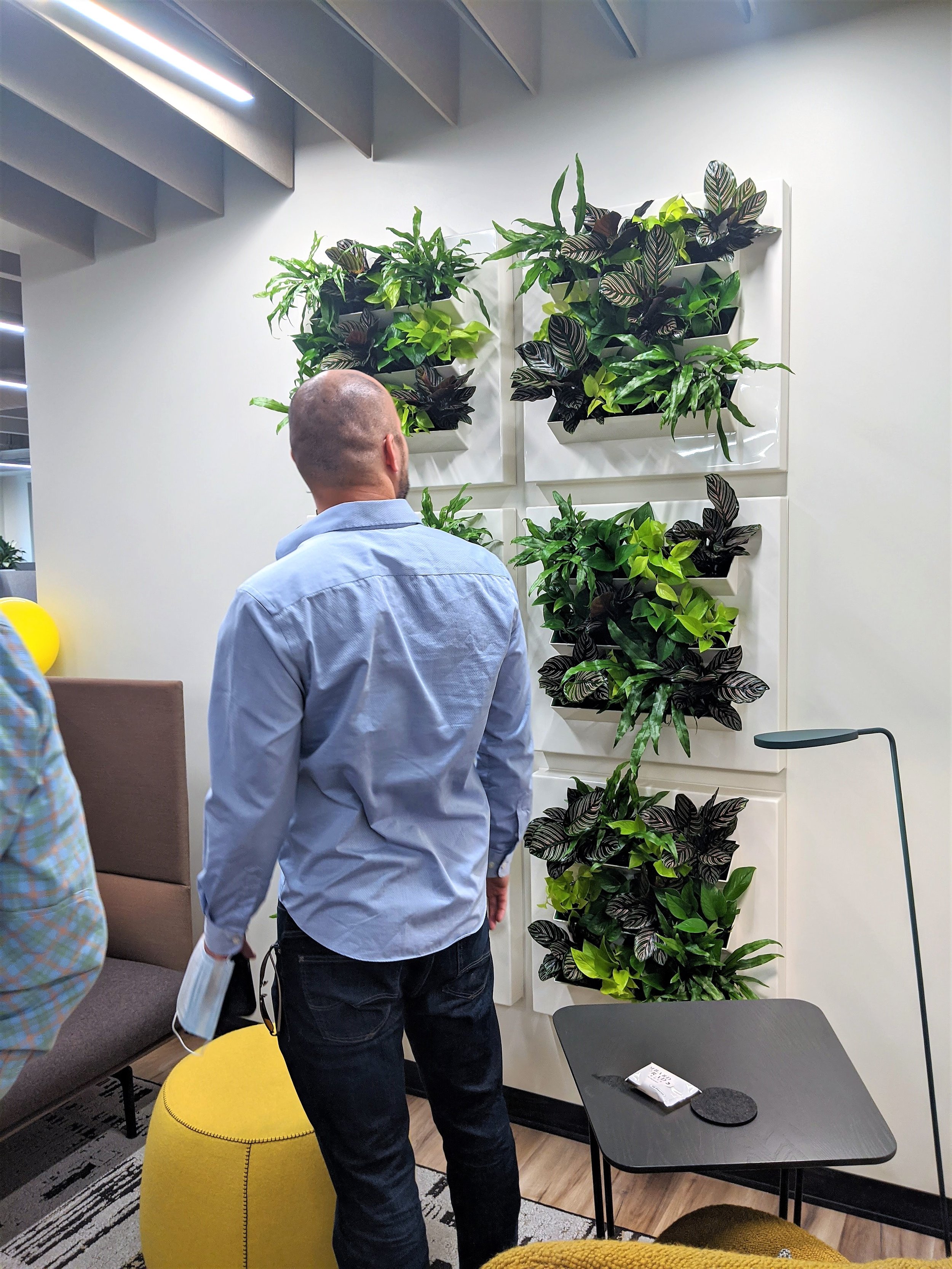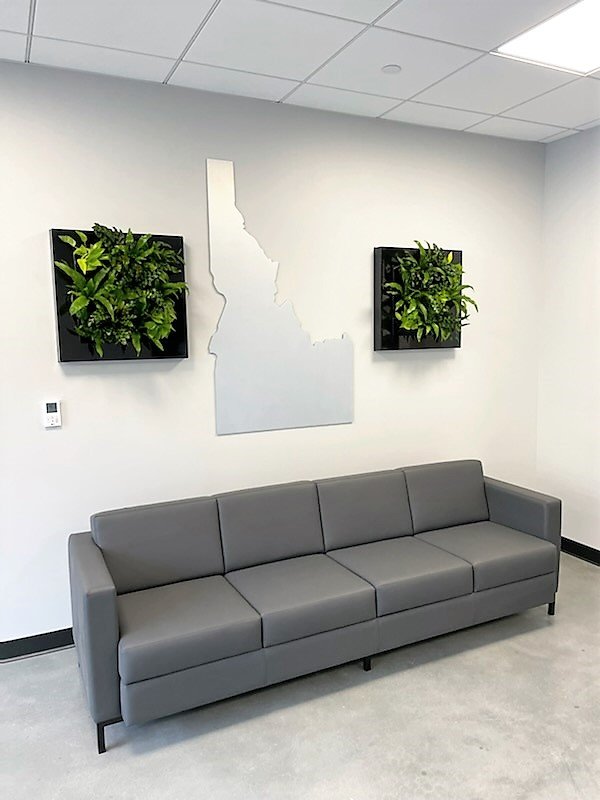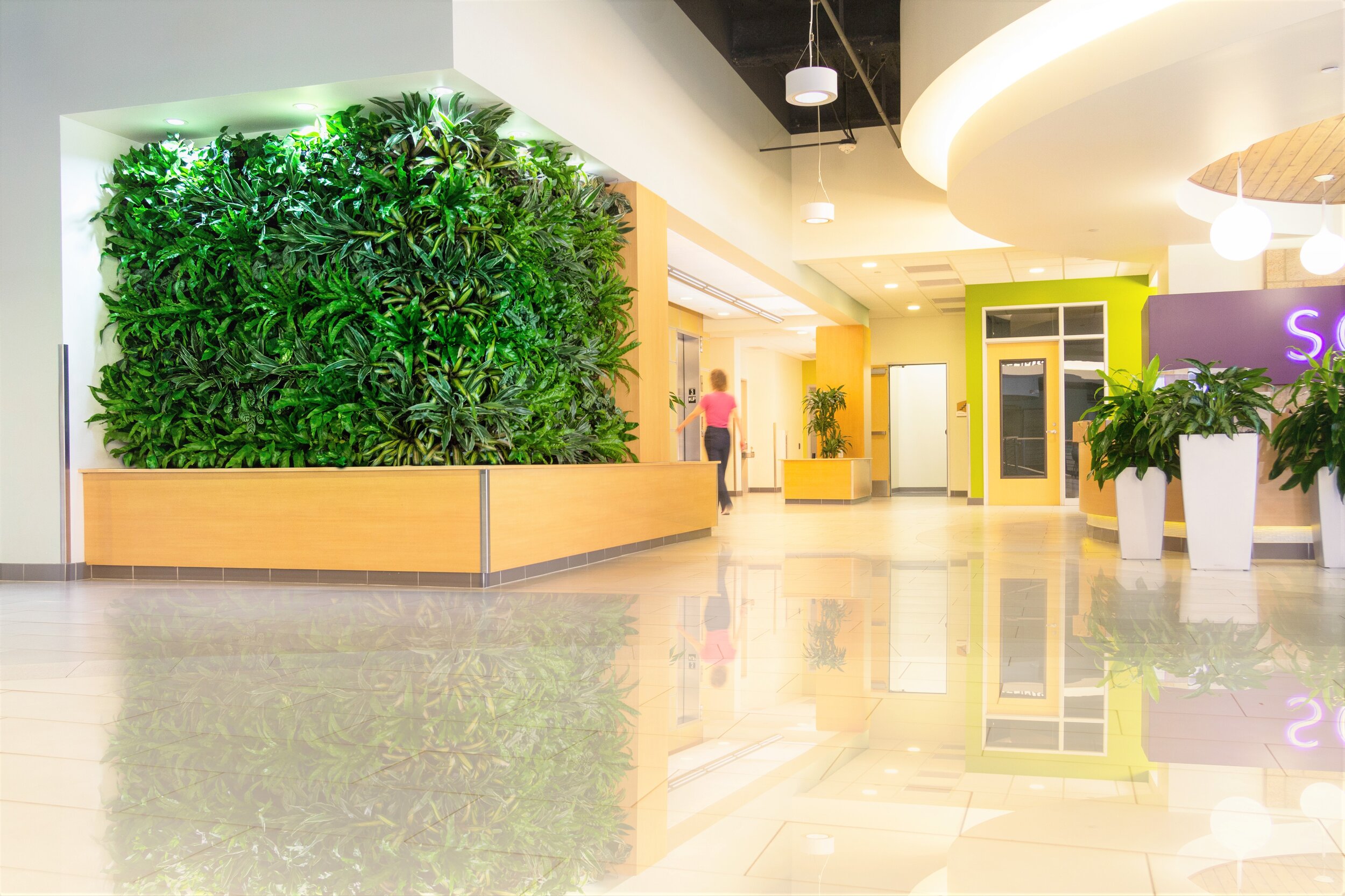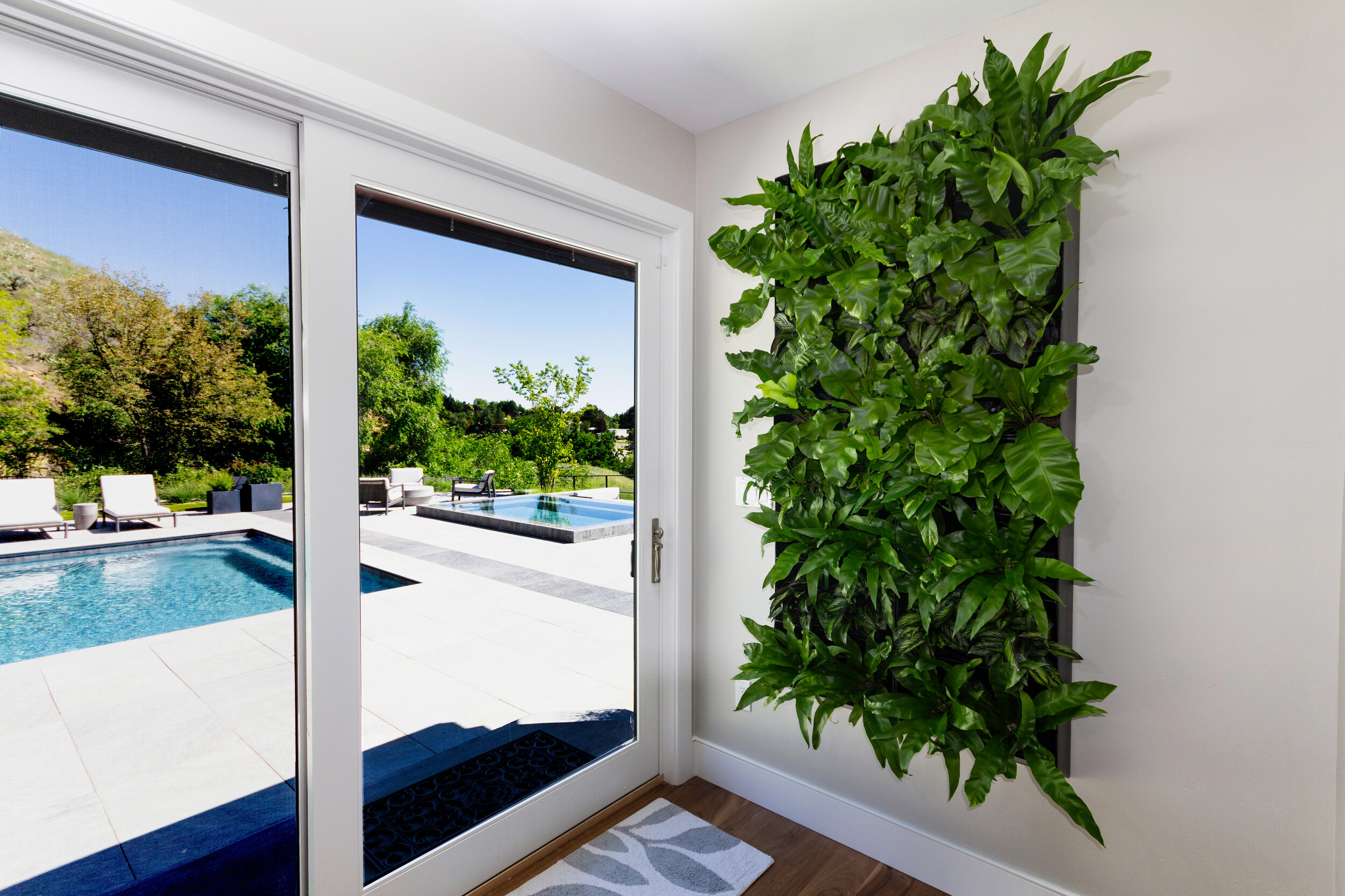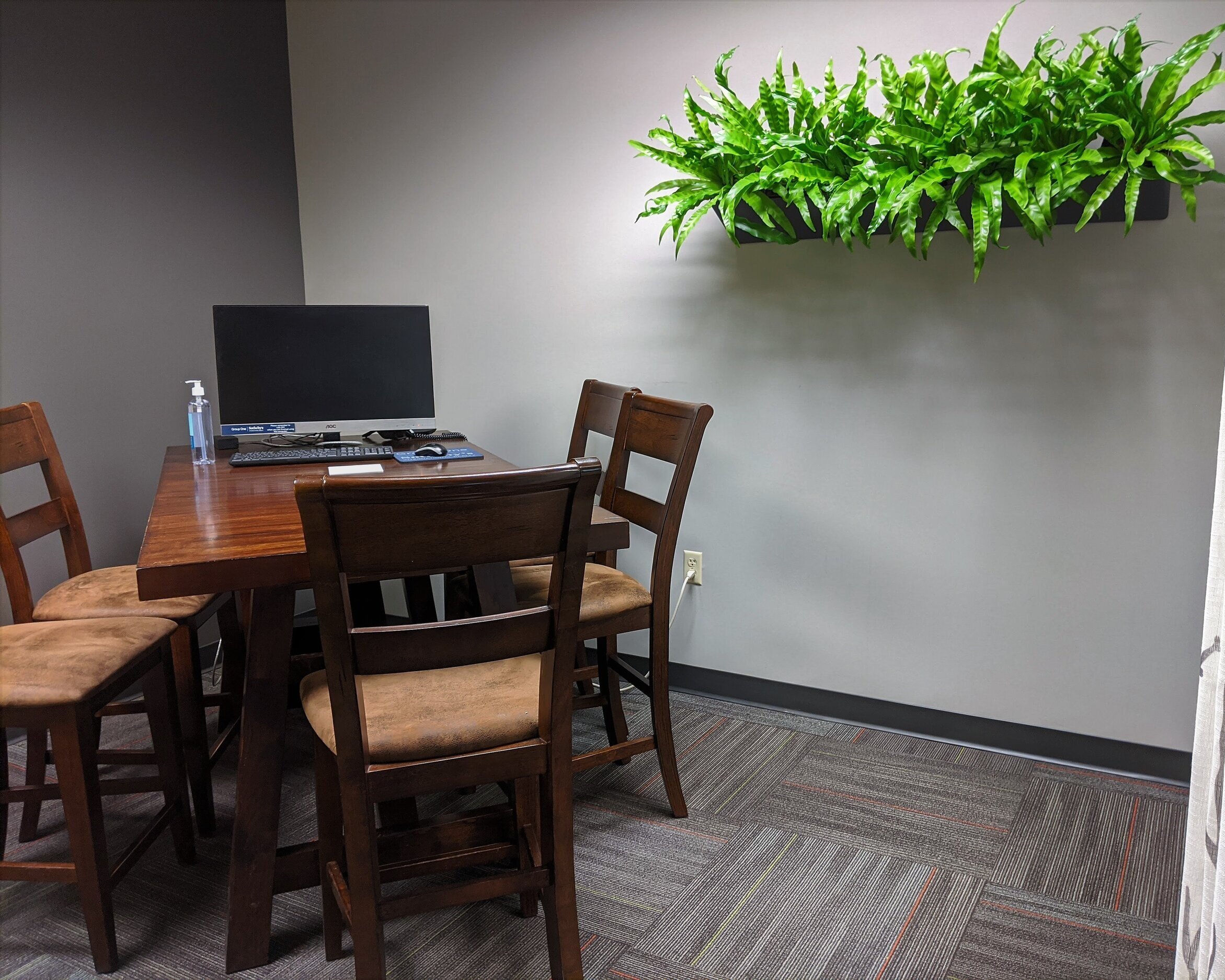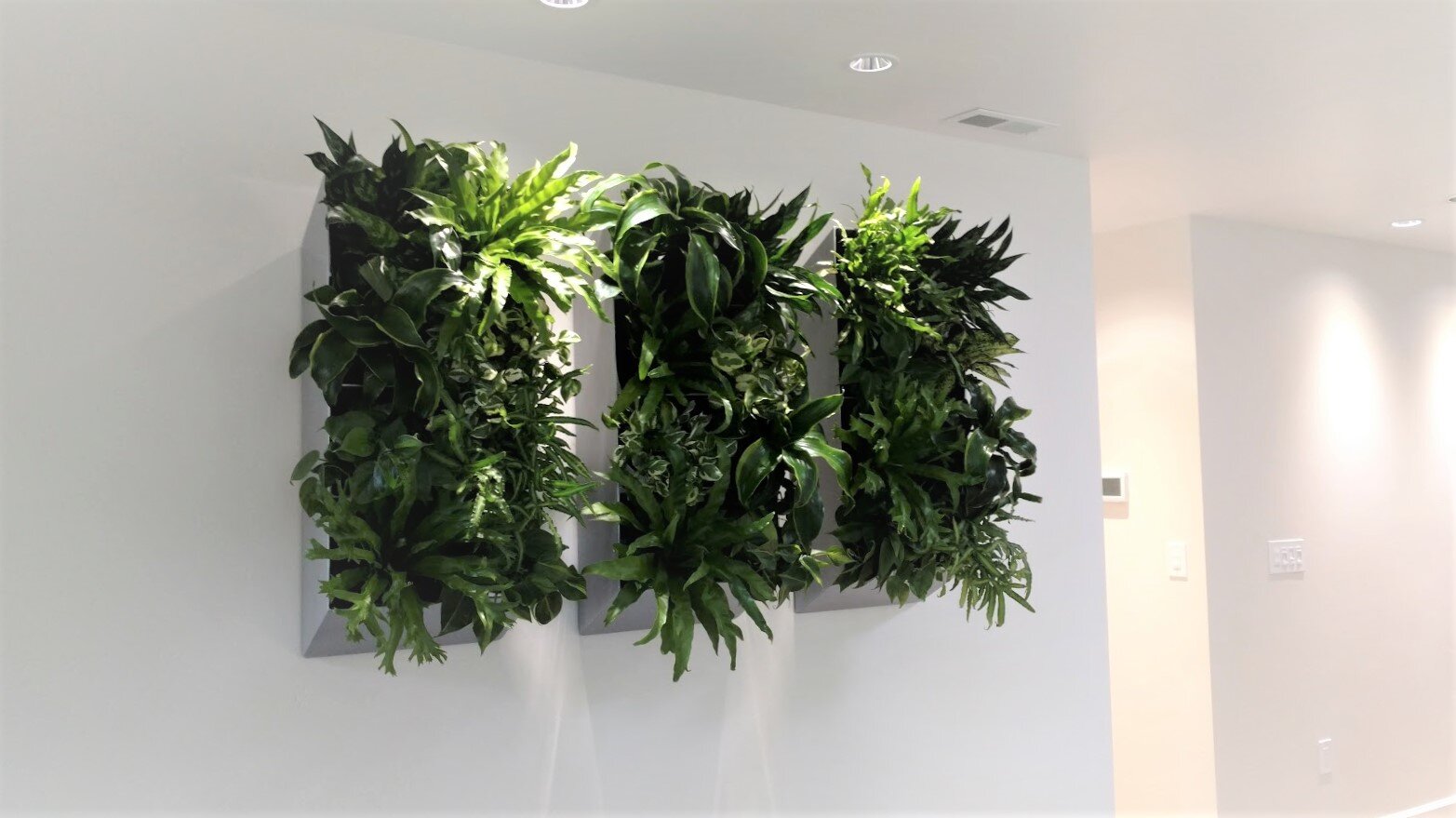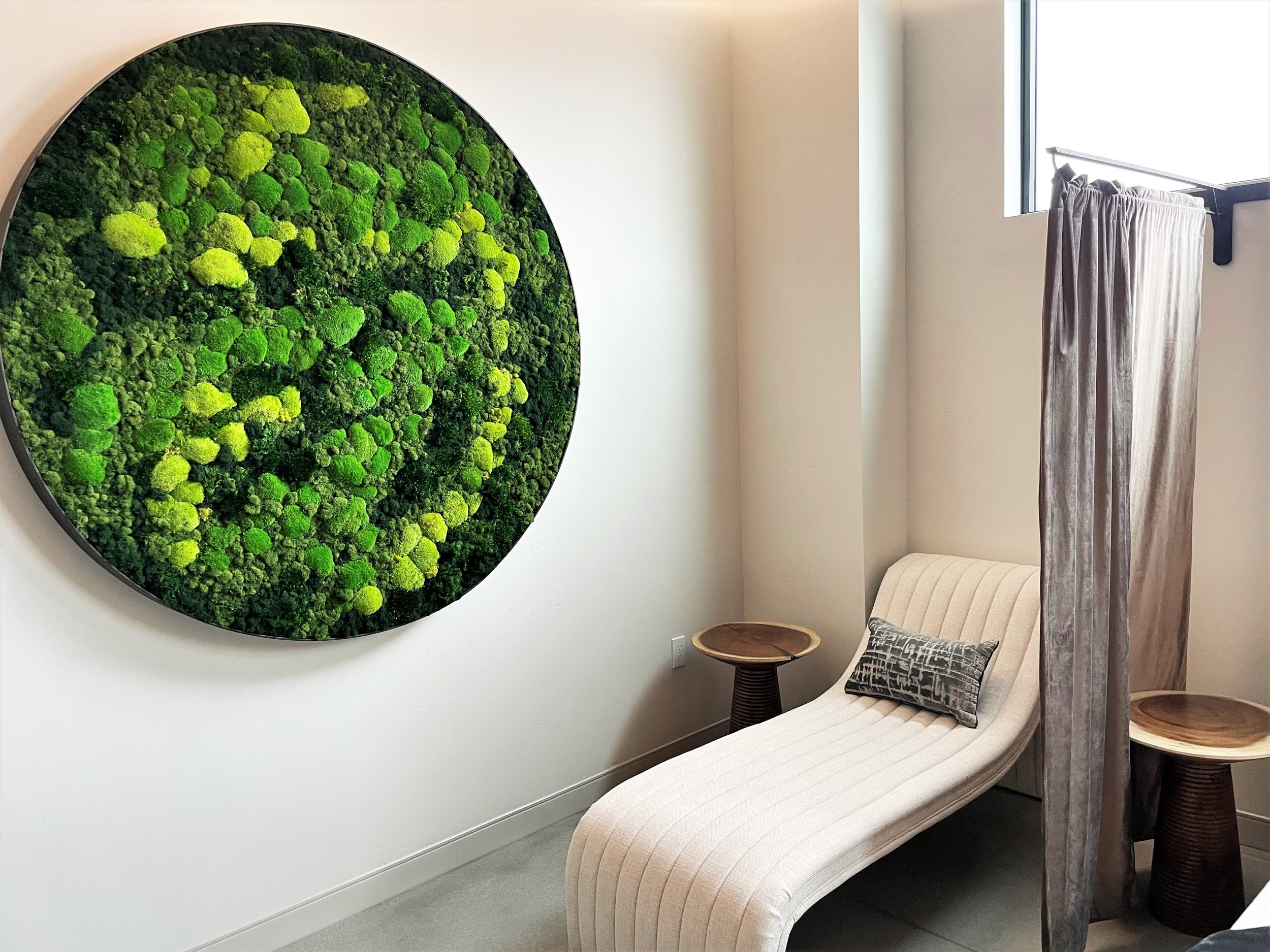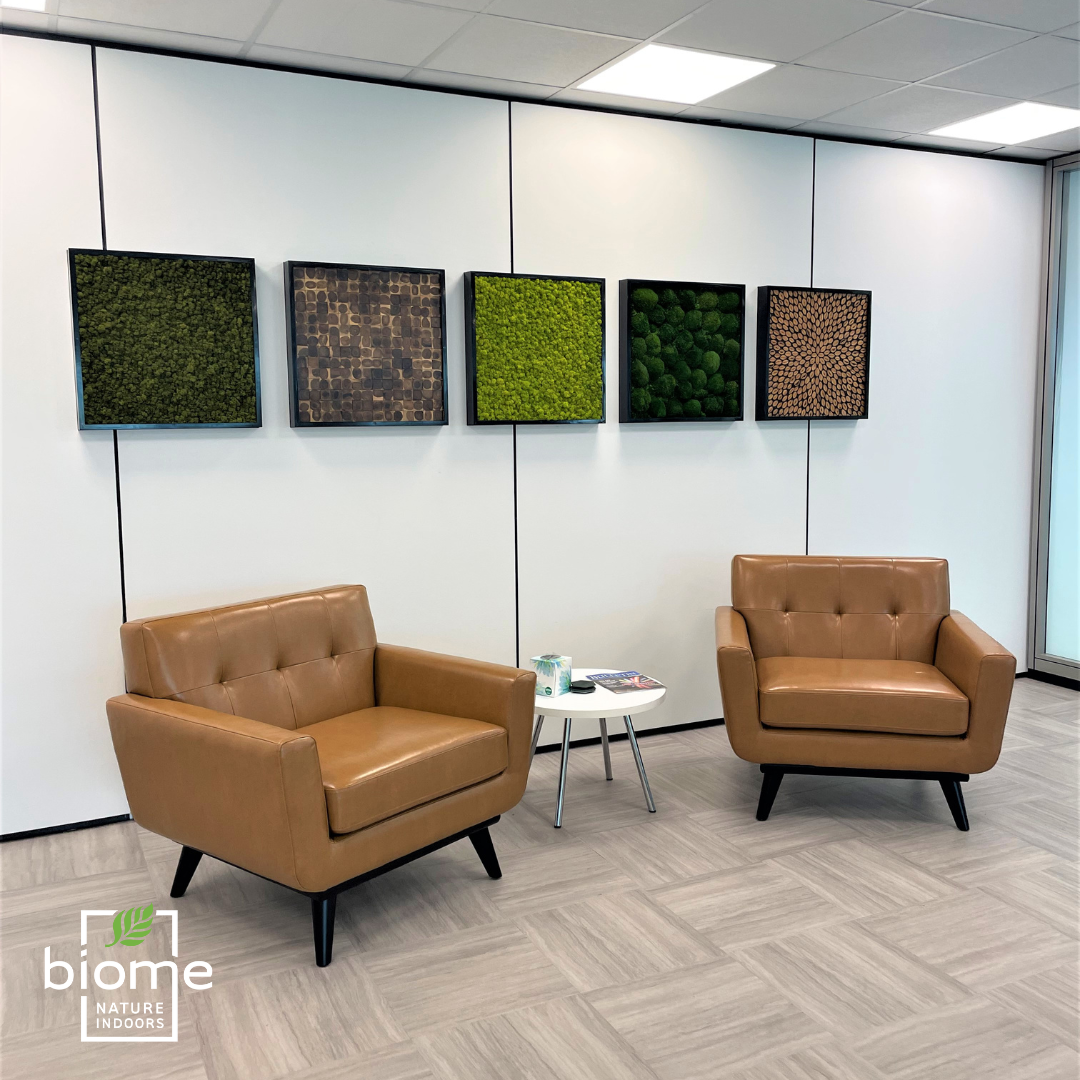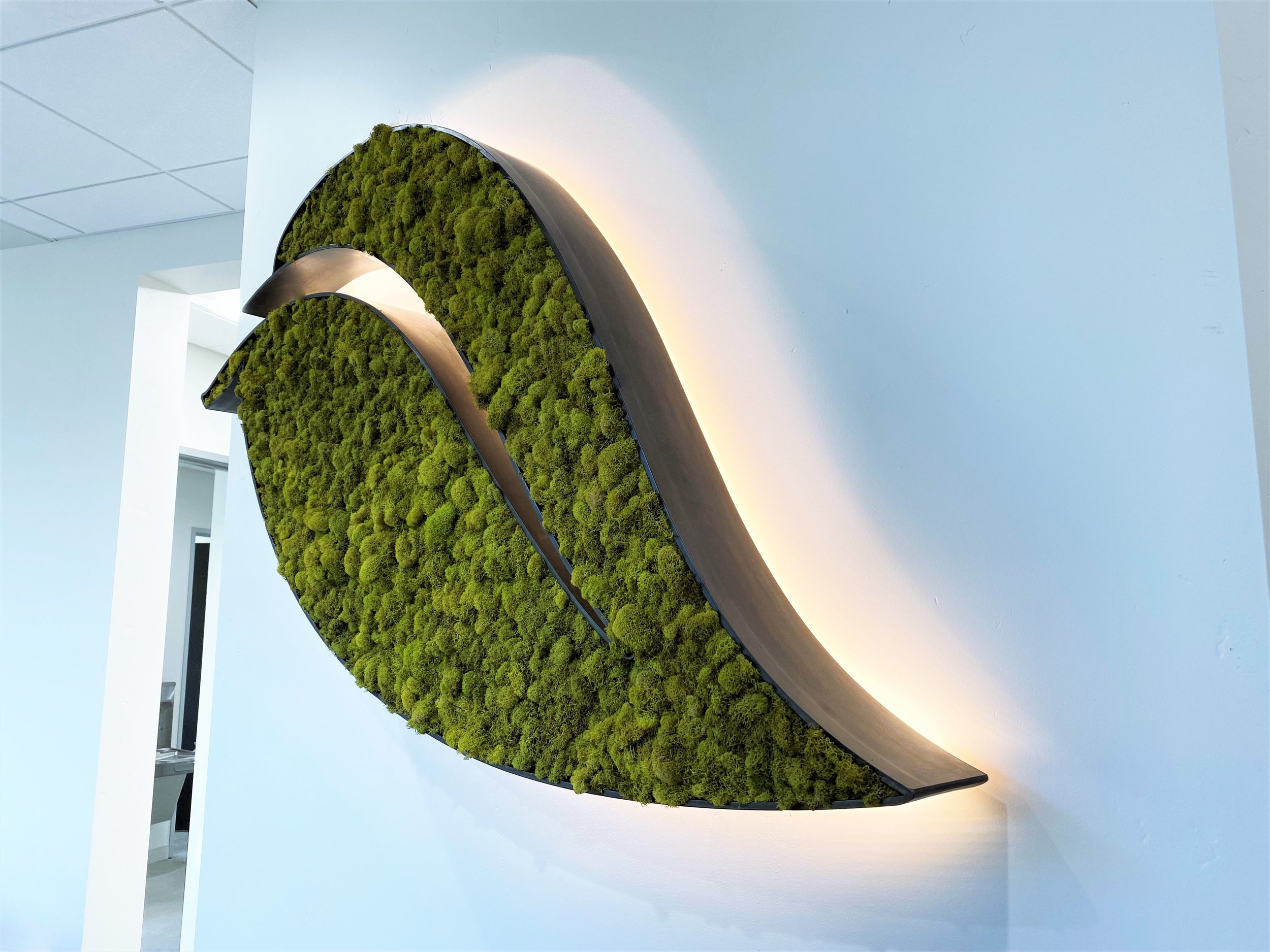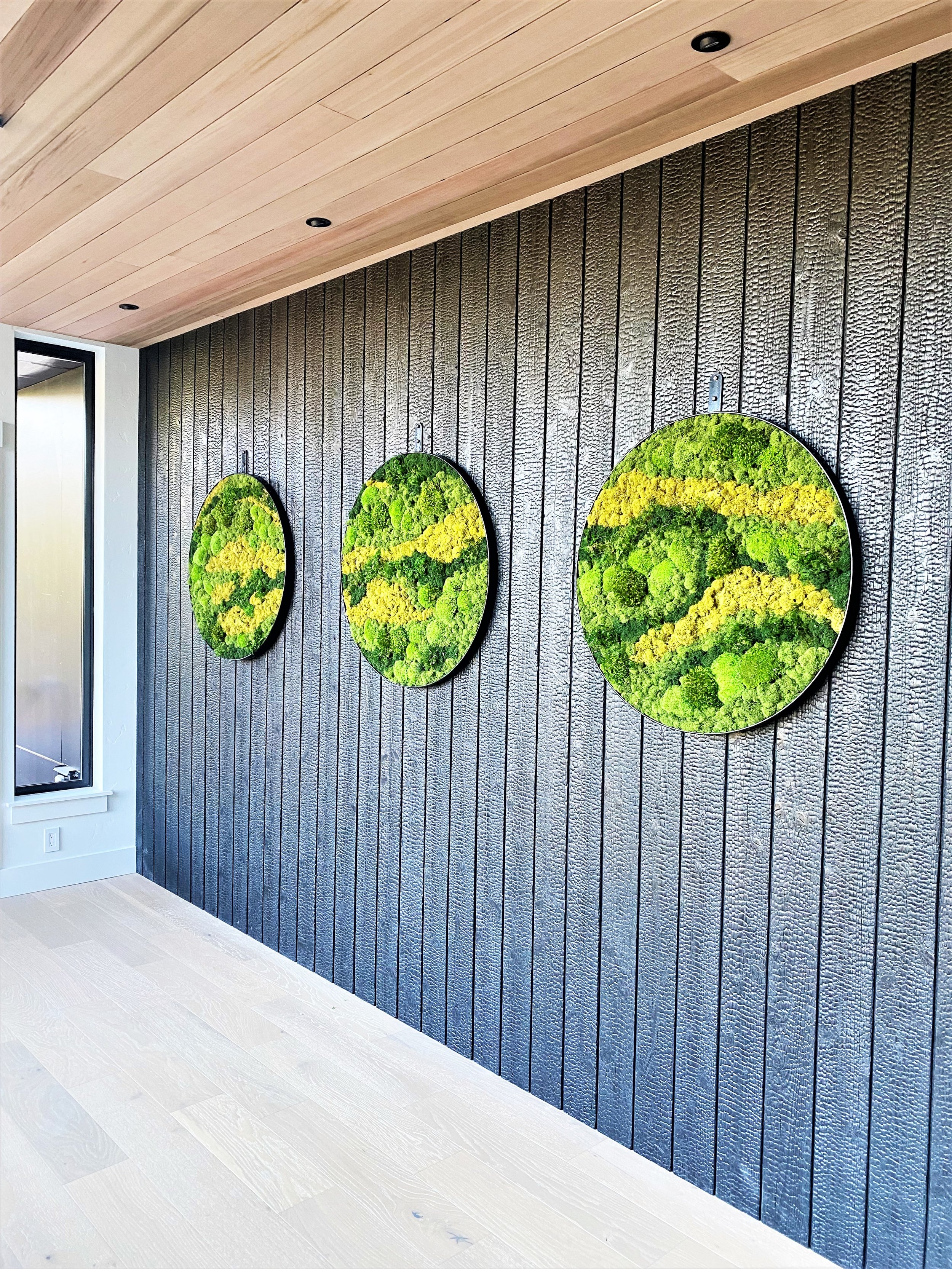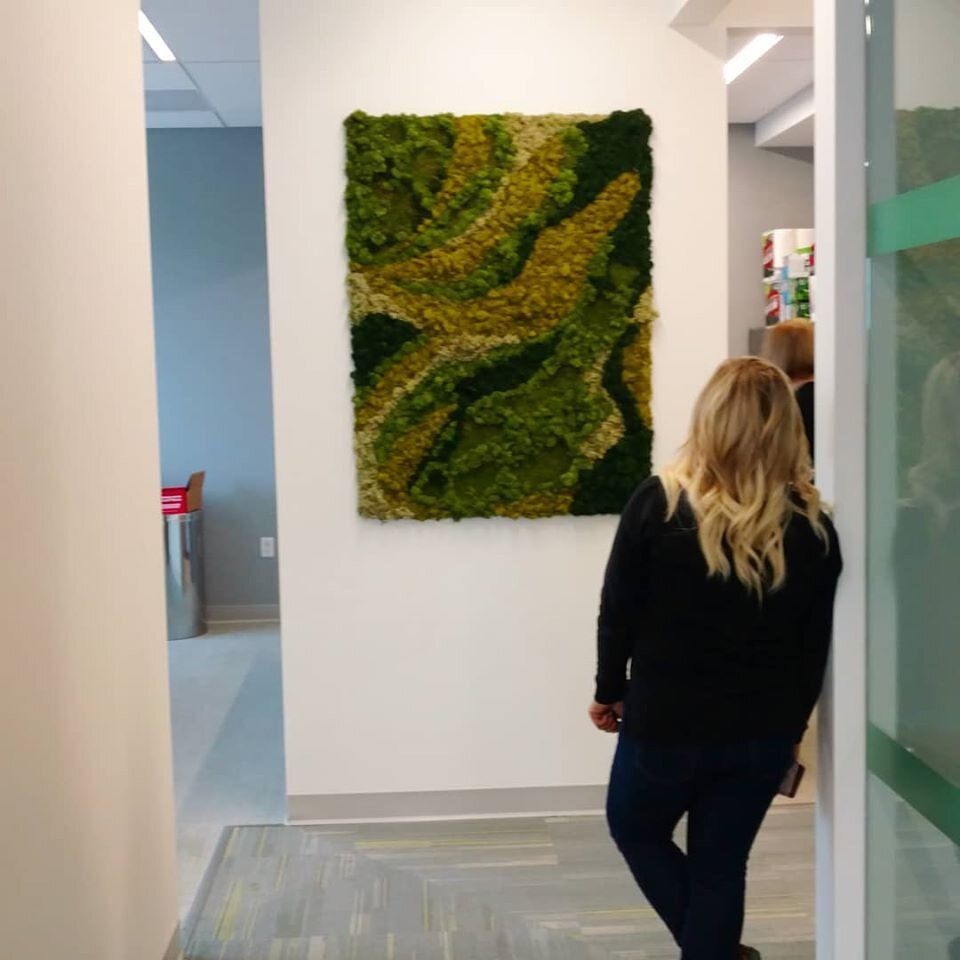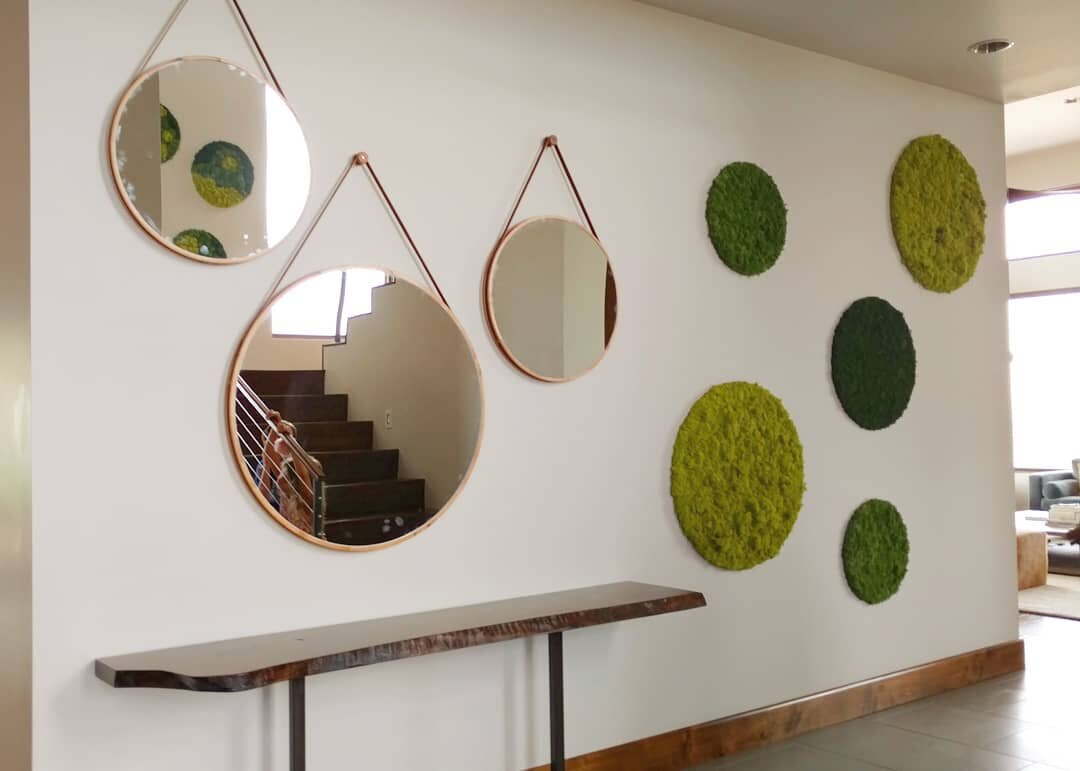The Ultimate Guide to Interior Living Walls
Plant Walls and Moss Walls come in a myriad of forms, shapes, sizes, and plant materials. Understanding the distinctions of this ‘Living Art’ is a pivotal step in choosing the right option for any interior space.
Plant Walls
Interiorscape professionals commonly refer to plant walls as Living Walls. These vertical structures feature living plants of varying textures and hues, creating upscale pieces of art for indoor workspaces. With proper lighting, a Living Wall system engineered with plant trays installs onto existing interior walls. They can also be recessed into walls as part of architectural plans prior to retrofitting or construction of a building space. The individual potted plants thrive with sub-irrigation which can often go a couple of weeks between watering, keeping maintenance down to a minimum. From grand floor-to-ceiling panoramas of plants to small frames that green-up compact office spaces, the effect is an innovative botanical palette. Rearrange plants—or better yet, swap out the plants with seasonal blooms and colors—and endless design possibilities emerge. Below are the options available in Living Wall systems, each with its own range of choices:
Custom –An interiorscape professional specs a tailor-made Living Wall that conforms to the client’s aesthetics and space. Custom design allows for nearly any configuration, including curved walls and corners.
Portable – Double or single-sided modular frames serve as room dividers and can be moved on castors or remain stationary. These systems include component options for varying sizes and designs, providing sound absorption and privacy in open-space work areas.
Mini-Wall Portrait Frames – Sleek two-foot frames which hold several rows of plants look beautiful mounted by themselves or in groups. Frames come in an assortment of neutral colors and are an effortless way to bring nature indoors.
Moss Walls
Becoming a sought-after favorite, Moss Walls are a modern, earthy option for interior design. Preserved moss materials—along with lichen, stone, driftwood, and other dried natural elements — are artfully mounted to panels, where creativity is limited only by a designer's imagination. Moss sourced from sustainable suppliers provides an array of textures and colors that stay supple with minimal maintenance. Panels encompassed in a 2-foot square botanical frame serve as an organic backdrop, while borderless panels seamlessly join together for an interior wall of any height and length. In no-light or low-light spaces, where potted plants would not thrive, Moss Walls are the preferred biophilic design option. In fact, moss art cannot be in direct sunlight. Clients have command over budget and space with the myriad of Moss Wall possibilities listed below:
Custom –Interior and horticulture designers collaborate to create one-of-a-kind Moss Wall Art, of any size or shape. Patterns of varying moss colors, or custom-shaped frames, allow clients to incorporate company logos and branding.
Pre-Made –Offered in several lengths and widths, these framed panels are pre-fabricated and ready to install. The varying color and texture options can be used alone or with other components.
Other modular options –Manufactured framed panels of bark, stone, and wood create an organic mix-and-match option. The textures and colors offered complement the pre-fab moss and living wall frames listed above.
Living Art allows flexibility to create a look for clients that sets them apart from competitors. But the benefits go beyond aesthetics: read HERE to learn more advantages of Living Walls. The designer who knows the perks and options of Living Walls and Moss Walls creates inspired, transformative interior spaces.

